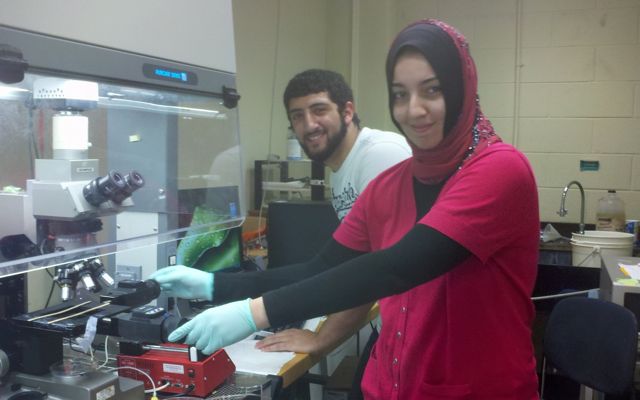Testing drug potency using dielectric spectroscopy measurements of cell membrane potential
This project focuses in testing the drug potency of different pharmaceutical compounds by measuring their effects on the membrane potential of a cell using single cell dielectric spectroscopy. This technique involves passing a thin stream of liquid containing the cells and the drug through a thin channel between two electrodes plates that create a variable electric field, and measuring the capacitance of the channel as the cells pass through it. The capacitance measurements are then used to estimate the electric potential of the cells. The overall idea is to develop a noninvasive equivalent to patch clamping technique used in electrophysiology and drug development to measure cell membrane potential. The experiment involves theoretical and experimental components that have to be used together.The students will build microfluidic devices for single cell membrane potential measurements. Once the appropriate set up is developed, different pharmaceutical compounds will be added and the cell dielectric permittivity is measured. Using the theoretical model that relates the applied electromagentic field properties and the cell dielectric permittivity and membrane potential, the drug potency is determined and compared with published values. The computational part of the project involves simulating a single cell in an electric field using finite-difference numerical methods, in MATLAB. This modeling work will allow to estimate the eletric field fringe effects (i.e. electrode boundary effects) on the electric property measurements.
UBM students Ali Mustafa and Amanee Mustafa in the laboratory of Dr Camelia Prodan:


|
This Program is supported by the NSF grant award
DMS-0926232 Please contact Victor Matveev for further information. |